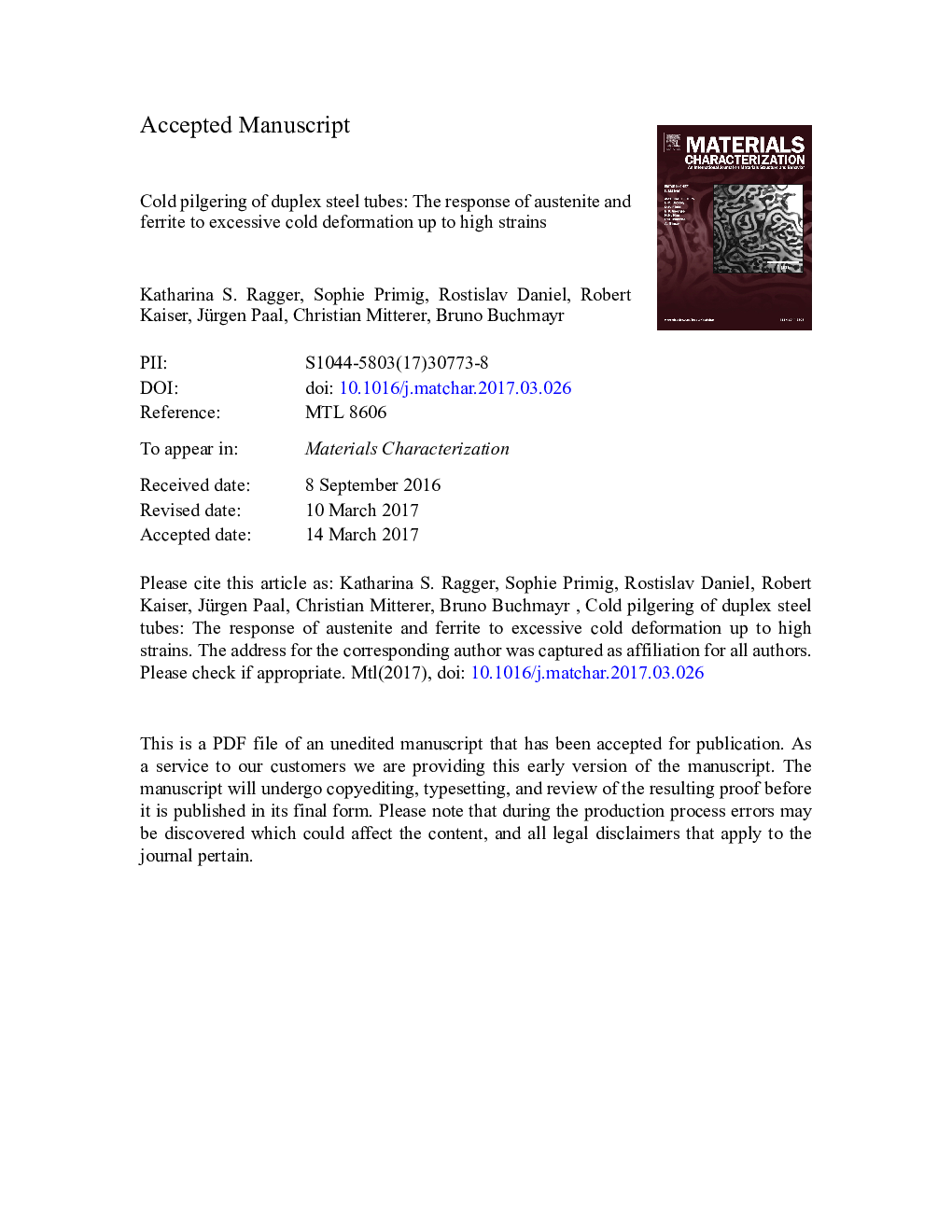| Article ID | Journal | Published Year | Pages | File Type |
|---|---|---|---|---|
| 5454758 | Materials Characterization | 2017 | 42 Pages |
Abstract
Duplex stainless steels are not easily formable due to the different deformation behaviour of austenite and ferrite. The seamless tube making process cold pilgering provides deformation conditions that enable enormous plastic strains at room temperature. The favourable stress state makes axial elongations of 400 to 600% at cross-sectional reductions of about 80% possible for hollows made of Super duplex steel grades. Upon reaching the final dimensions, a range of equivalent plastic strains of up to approximately 3 is covered varying between the transition zone's in- and outside. In this work the cold working behaviour and textural evolution of Super duplex steel 2507 during cold pilgering under these conditions are investigated. An industrial tube's transition zone is considered. The microstructural response to deformation is studied at different axial positions. The impact of the different forming conditions through the wall thickness on the final properties is analyzed. A unique combination of Electron Backscatter Diffraction, finite element modelling and nanoindentation is used to correlate the microstructure with the deformation behaviour before, during and after the cold pilger process.
Related Topics
Physical Sciences and Engineering
Materials Science
Materials Science (General)
Authors
Katharina S. Ragger, Sophie Primig, Rostislav Daniel, Robert Kaiser, Jürgen Paal, Christian Mitterer, Bruno Buchmayr,
